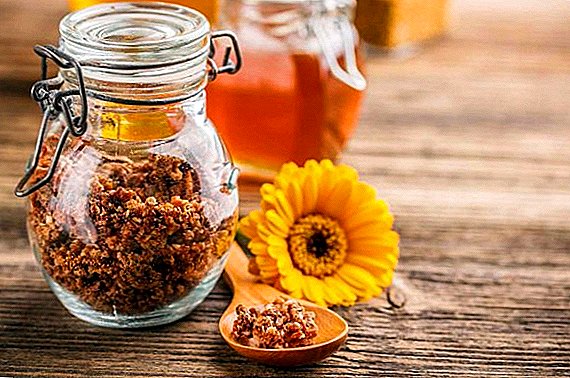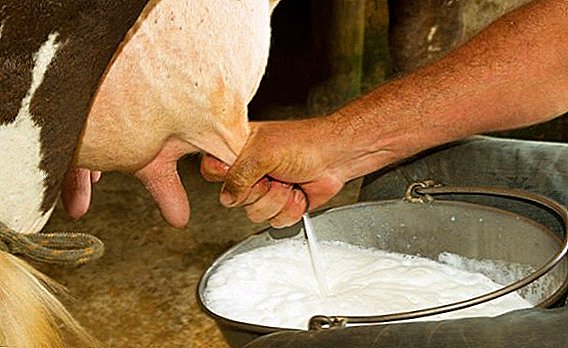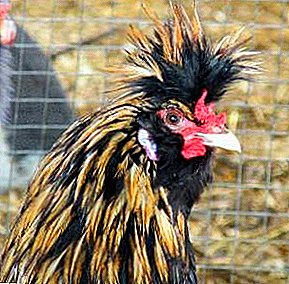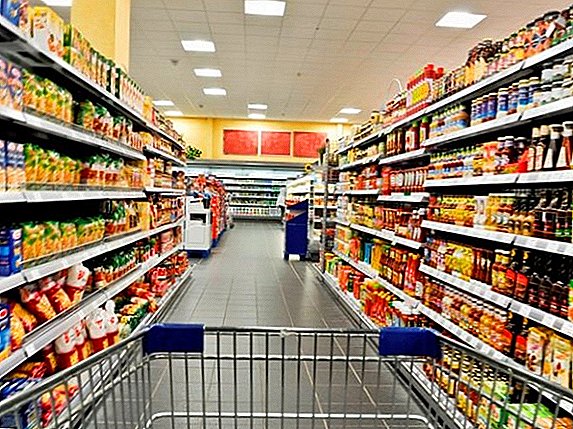 Chicken eggs are undoubtedly one of the most popular foods. At the same time, outwardly indistinguishable eggs are labeled differently and have different values. In this publication, we will understand what criteria this product belongs to certain classes and why it is assigned different categories. All criteria comply with the National Standard of Ukraine DSTU 5028: 2008 "Food Eggs" from 2010.
Chicken eggs are undoubtedly one of the most popular foods. At the same time, outwardly indistinguishable eggs are labeled differently and have different values. In this publication, we will understand what criteria this product belongs to certain classes and why it is assigned different categories. All criteria comply with the National Standard of Ukraine DSTU 5028: 2008 "Food Eggs" from 2010.
Requirements for the quality of chicken eggs for freshness
According to the standard, according to the criterion of freshness, the following classes are distinguished: eggs intended for sale on the territory of Ukraine: dietary, table and chilled. In addition, a special classification is provided for a product intended for export (extra, A and B), but all of these classes will be described in more detail below.  The criteria for assigning this product to a particular class is the period during which it was stored, and the day when the egg was laid was not included in this period. In addition, storage conditions are taken into account.
The criteria for assigning this product to a particular class is the period during which it was stored, and the day when the egg was laid was not included in this period. In addition, storage conditions are taken into account.
Did you know? Chicken egg is considered the most popular product on earth. Its world-wide production volumes are not exactly known, but in China, laying hens produce about half a billion units of this production per day.
The ratio of the constituent eggs
In addition to the shelf life, parameters such as the state of the air chamber, its dimensions along the major axis, the position and mobility of the yolk, the density and transparency of the protein affect the quality assessment of the egg. All these parameters are determined using an instrument called an ovoscope.
In addition, the state of the shell is taken into account. The shell of the product must be intact, clean. It should not be traces of litter, various stains. Slight contamination in the form of individual specks or stripes from the transport tape is permissible. The smell of this product should be only natural, persistent foreign odors (putrid, musty, etc.) are unacceptable.
Find out if chicken eggs are good.
For implementation:
On the domestic market, eggs of such species are allowed for sale for later consumption: dietary, table and chilled. Let us consider in more detail the characteristics of products classified in these classes. 
Dietary food
According to the standard, this class includes eggs that were stored no more than 7 days at a temperature of from 0 ° C to + 20 ° C. They should have a non-polluted and not damaged shell, on which individual spots or strips from the conveyor belt are allowed, taking in total no more than 1/32 of the shell area. Protein must be transparent and light, without any inclusions, have a dense texture. The yolk on the ovoscope is difficult to see, it is located in the center, almost immobile. The air chamber is fixed, its height does not exceed 4 mm.
Sometimes you can find two yolks in chicken eggs.
Food canteens
This class is assigned to products whose shelf life at temperatures from 0 C to + 20 ° C exceeded 7 days. The shell must be intact and clean, but it is allowed to have separate spots and strips on it, the total area of which does not exceed 1/8 of the shell surface. Protein is dense, transparent and light. The yolk is poorly visible on the ovoskop, is located in the center or may be slightly shifted, in addition, it may slightly move during rotation. The small mobility of the air chamber is allowed, its height must not exceed 6 mm. 
Chilled food
The cooled product class is a product that was stored in a refrigerator at a temperature of -2 ° C ... .0 ° C for not more than 90 days. The shell should remain without damage and not polluted, but it is allowed to have separate spots and stripes on it, the total area of which is no more than 1/8 of the shell surface. Protein is dense, transparent and light, but its less dense texture is possible. The yolk on the ovoscope is poorly visible, it should be in the center or slightly displaced, its mobility is allowed. The air chamber can also be slightly movable, and its height should not exceed 9 mm.
Important! Eggs of this class can be used exclusively for industrial processing. The most common product of such processing is egg powder.
For export
Separately classified products intended for export. There are three types of products: extra, A and B. The criteria for these classes are somewhat different from the criteria for products for the domestic market.
We advise you to read about the benefits and cooking of goose, ostrich and cesar eggs.
Food extra
The extra class includes products that have been stored for not more than 9 days at a temperature of + 5 ° C .... + 15 ° C. The shell of such eggs must be clean and intact. Protein without impurities, dense, light and transparent. The yolk on the ovoscope is poorly visible, it is located in the center, with rotation it should not be seen his noticeable movements. The air chamber is fixed, its height does not exceed 4 mm. 
Food Grade A
This class includes products stored for no more than 28 days at a temperature of +5 ° C .... + 15 ° C. Its other parameters correspond to the type of extra, but the height of the air chamber can be slightly larger - up to 6 mm.
Food grade B
The class B gets export products stored at a temperature of 0 ° C .... + 5 ° C for at least 24 hours and according to other criteria it does not meet the requirements of class A. This product can be used both in the food industry and for industrial processing .
Find out what ways you can check the freshness of eggs at home (in water).
Categories depending on weight
In addition to classes, division of products into categories depending on weight is used. 
There are the following categories:
- selective (or XL for export products) - the weight of one egg is 73 grams or more, the weight of ten pieces is at least 735 grams;
- the highest category (L) is from 63 g to 72.9 g, the weight of a dozen is not less than 640 g;
- the first category (M) - from 53 g to 62.9 g, a dozen mass of not less than 540 g;
- the second category (S) - from 45 g to 52.9 g, a dozen mass of at least 460 g;
- small - from 35 g to 44.9 g, the weight of a dozen is not less than 360 g.
Important! Products of the category "small" can belong only to the classes "canteen" and "cooled". Eggs weighing less than 35 grams are not sent to retail.
Marking
Products admitted for sale on the domestic market are stamped or sprayed. Non-hazardous paints are used for this. When marking the class "Dietary", the class ("D"), the category, the date when the egg was laid (the date and the month only) are indicated. For other classes, the class ("C") and category are indicated. Marking categories are as follows:
- "B" - selective;
- "0" is the highest category;
- "1" is the first category;
- "2" is the second category;
- "M" - small.
 When marking export products, the class ("extra" or "A"), category ("XL", "L", "M" or "S"), manufacturer's code, date of demolition (day and month) are applied. Class B is marked with a circle with the letter "B" inside.
When marking export products, the class ("extra" or "A"), category ("XL", "L", "M" or "S"), manufacturer's code, date of demolition (day and month) are applied. Class B is marked with a circle with the letter "B" inside.Did you know? The Chinese have learned to fake chicken eggs. The shell of the fakes is made of calcium carbonate, the contents consists of gelatin, dyes and food additives. Outwardly, it is almost impossible to distinguish a fake from the original product, but its taste, of course, is very different from the original.
Characteristics of eggs that can be used for industrial processing for food
Exclusively for industrial processing, they allow products that meet the following criteria:
- the contamination of their shell exceeds the permissible values for various classes;
- weighing less than 35 grams;
- the shell has mechanical damage (bruising on its side, notching);
- there is a partial leakage of protein, provided that the yolk is intact and the product is stored for no more than a day at a temperature of + 8 ° C ... + 10 ° C;
- with shell defects, such as growths, wrinkles, etc .;
- with movable air chamber;
- with speckled spots with a total area of not more than 1/8 of the shell area;
- with yolk prischshim to the shell (the so-called "prushushka");
- with partial mixing of protein and yolk ("pouring");
- with a foreign smell that quickly disappears ("zapashistostost", formed during storage of products with other products that have a strong smell).

What eggs are forbidden to use for food needs and should be considered a technical marriage
It is forbidden to use in the food industry products that are considered technical defects and fall under such characteristics:
- with a shelf life exceeding the norms established for all classes;
- "green rot" - the contents get a greenish color and extremely unpleasant smell;
- "Krasyuk" - a complete mix of white and yolk due to the damaged shell of the latter;
- mold stains on cracks in the shell and in the air chamber;
- "blood ring" - blood vessels or similar inclusions in the yolk or protein;
- “big spot” - any spot on the inner side of the shell with an area of more than 1/8 of the shell surface;
- "mustiness" - the smell of mold;
- "Mirage egg" - unfertilized specimens from the incubator;
- "cuff" moldy or bacterial - a product with muddy contents and an unpleasant smell as a result of a lesion by a mold or putrefactive bacteria.
 As you can see, the requirements for the quality of chicken eggs are set out in the standard in sufficient detail and clearly. Understanding the labeling of this product is very simple, so when you buy it, you need to pay attention to the above details - this will help you choose a quality product that is most suitable for a particular situation.
As you can see, the requirements for the quality of chicken eggs are set out in the standard in sufficient detail and clearly. Understanding the labeling of this product is very simple, so when you buy it, you need to pay attention to the above details - this will help you choose a quality product that is most suitable for a particular situation.











